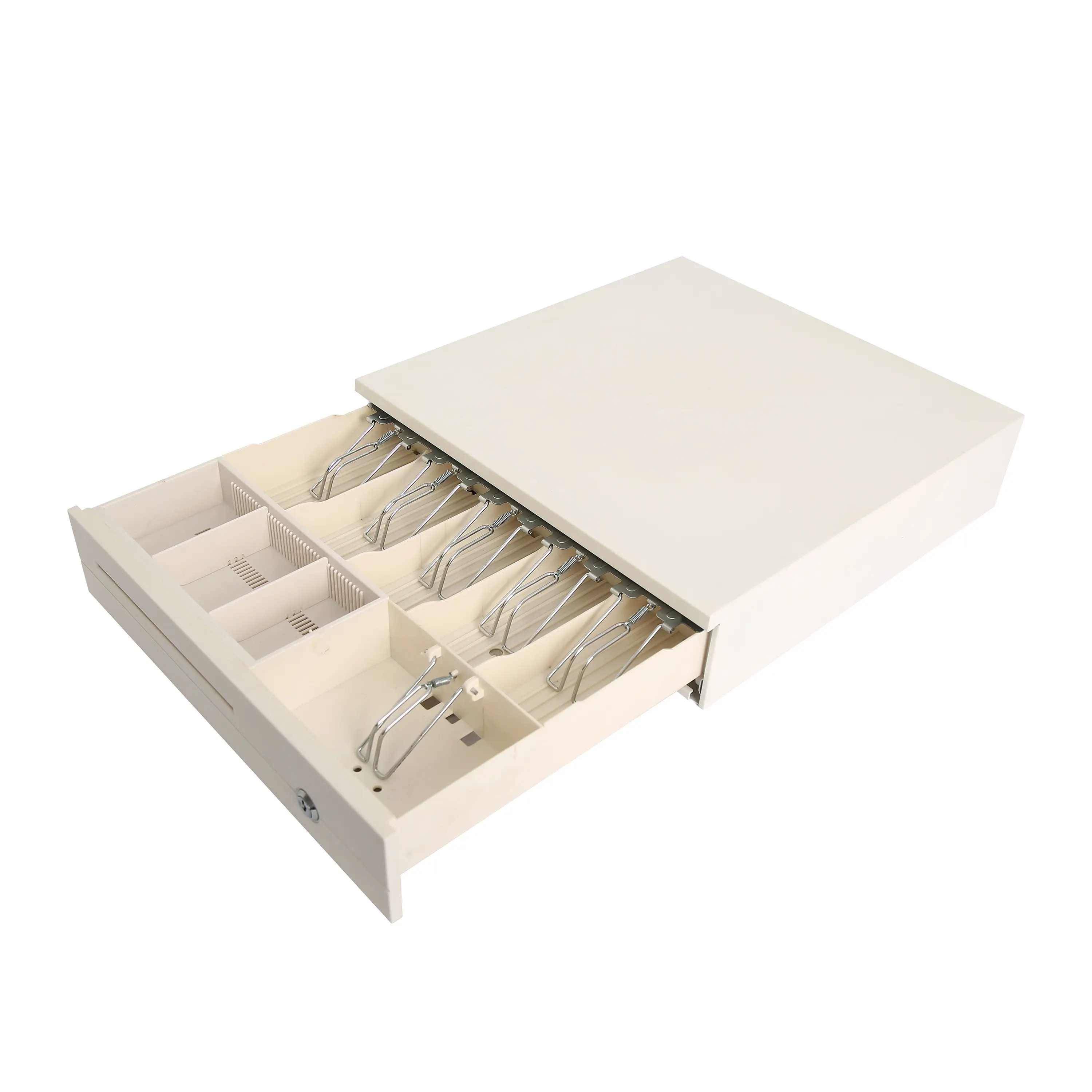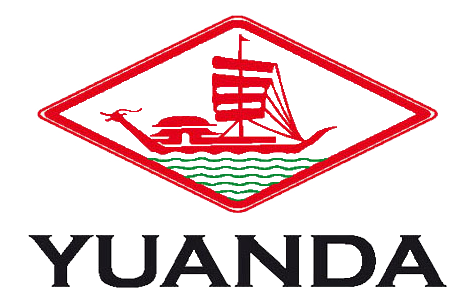Understanding Cash Drawer Size Standards
Getting the right size cash drawer matters a lot in retail environments, and knowing what's standard makes things easier when shopping around. Most cash drawers fall somewhere between 10 inches wide to almost 20 inches, though it really depends on what kind of business we're talking about here. Retailers who understand these typical measurements can find drawers that actually work with their registers instead of fighting against them. Industry data shows that many stores tend to go for drawers measuring around 14 to 16 inches across. Making sure everything fits together properly with current POS systems and where registers sit on counters isn't just about looks either. When components align correctly, operations run smoother and there's less frustration during busy hours at checkout.
Measuring Your Counter Space
Getting the measurements right for counter space matters a lot when picking out a cash drawer. A good fit means everything for workflow efficiency. Grab a tape measure and figure out how much width and depth there really is, but leave some extra room just in case things don't quite line up perfectly. Also think about where customers actually stand during transactions because placement makes a big difference in accessibility and overall experience. Don't forget to measure the counter height too. If it's not comfortable for people who need to reach into the drawer throughout the day, operations will get frustrating fast. Take all these things into account and businesses end up with cash drawers that work well without causing headaches down the road.
Small Cash Drawers (Under 14")
Ideal Counter Fit
Small cash drawers work really well on those tight counters we see at kiosks and little coffee shops around town. The main advantage is obviously saving precious counter real estate since these models have that super slim design. And despite being compact, most still offer decent security features that keep cash safe from prying hands. For places where transactions aren't happening all day long, these smaller drawers actually make sense because there's just not much room needed for coins and paper money anyway. Looking at what's been selling lately, it seems more and more businesses are going this route when they want to keep things running smoothly without taking up too much space on their counters.
Capacity Limitations
Small cash drawers are pretty compact but they really struggle with bigger bills in terms of storage space. Businesses need to look at how many transactions happen daily so they know if these little drawers will constantly need refilling all day long something nobody wants since it wastes time. According to what people who actually work with them say, those tiny drawers just don't cut it when there's a rush of customers paying cash. For better handling of money flow, stores could try putting extra coin slots next to regular drawers or start accepting payments through phones while still keeping some cash on hand. Most shops find this mixed approach works best for avoiding headaches caused by running out of room in those small drawers, keeping everything moving smoothly instead of getting stuck waiting for someone to restock change every five minutes.
Medium Cash Drawers (14-16")
Versatile Counter Compatibility
Medium sized cash drawers offer just the right mix of space and portability, working well in pretty much any retail setting or service environment. These drawers sit nicely on standard countertops without taking up too much room, yet still hold plenty of cash both paper money and coins, keeping things organized behind the counter. The practicality speaks for itself looking at what stores report happening when they switch to these models customers tend to wait less time for change, which means happier shoppers overall. Plus, most modern point of sale systems work smoothly with medium cash drawers, so business owners don't have to worry about compatibility issues when upgrading their registers.
Optimal Transaction Handling
Medium size cash drawers are designed to make transactions run better, especially when businesses get busy during rush hours. These drawers have plenty of room inside, which helps reduce mistakes when counting money and keeps track of cash flow much easier. Research shows that stores where transactions go smoothly tend to have happier customers who come back more often. Most operators recommend putting these drawers at just the right height so employees don't strain their backs reaching for them all day long. Getting this setup right actually saves time and makes the whole checkout process work better for everyone involved.

Large Cash Drawers (17-19")
Spacious Counter Requirements
Big cash drawers take up quite a bit of counter room, so they work best in places where there's lots of money changing hands all day long. Most models come with several sections inside to keep bills and coins sorted out properly. Retailers who deal with hundreds of customers daily find these bigger drawers make life easier when handling all those transactions back to back. The key thing is making sure there's enough breathing space around the drawer itself. When everything's organized well, staff members don't end up fighting over who gets to reach into the drawer first during busy periods.
High-Volume Business Use
Big cash drawers work best in busy places like retail stores, fast food joints, and any business where lots of people come through the door needing quick transactions. When there's so much money moving around though, things get risky too. That's why good locks matter a lot these days. Most experienced store managers know they need to check their cash systems regularly. Some even do surprise counts during slow hours just to stay on top of things. Money mishaps happen when folks aren't careful with how they handle cash flow. Smart owners invest time in training staff properly and keeping track of every dollar. After all, losing even small amounts adds up fast in businesses that process hundreds or thousands of payments daily.
Specialty Configuration Sizes
Compact Under-Counter Options
Cash drawers made specifically to slide under counters work great for shops where every inch counts but managing money still matters a lot. These drawers come in all sorts of sizes and shapes so they can squeeze into tight spots behind registers without making it hard to get at the cash when needed. Most shopkeepers we talk to say they love having their cash stored underneath instead of cluttering up the front counter area. The designers who study this stuff look at things like how much room the drawer takes up versus how safe it keeps money, plus whether customers notice any delays during transactions. When stores go with these smaller drawers tucked beneath the counter, they usually end up saving space and keeping their cash handling operations running smoothly at the same time.
Custom-Built Solutions
Businesses with unusual counter sizes or layouts often need custom cash drawer solutions to fit their particular needs without compromising efficiency. Most manufacturers emphasize working hand in hand with customers to build these special drawers according to what matters most to them material choices, lock types, even how they look alongside existing equipment. The numbers back this up too there's been a steady increase in requests for made-to-order cash drawers lately as more companies realize off-the-shelf options just don't cut it anymore. When stores go for custom builds, they get better function and stronger security features that actually work within their daily operations rather than forcing changes to accommodate standard products.
Choosing Your Perfect Cash Drawer Fit
Counter Space vs. Capacity Balance
Getting the right balance between counter space and cash drawer size matters a lot for smooth day-to-day operations. Start looking at what kind of transactions happen most often and how much room there actually is on the counter before settling on any particular drawer. Many experienced operators recommend making a quick list of must-have features when shopping around for drawers that work well with specific businesses. When comparing how many transactions typically occur versus how much money needs to be stored, this helps point toward the appropriate drawer model regardless if running a tiny shop or managing a busy store front. Ultimately, whatever gets chosen needs to sit comfortably on the counter without taking over the whole area while still holding enough cash to handle regular business demands without constant refilling.
Future-Proofing Your Selection
Picking out a cash drawer isn't just about what works now but also thinking ahead to how the business might expand and what new ways customers will pay. Payment methods keep changing all the time, so going for something flexible makes sense. Most experts suggest getting cash drawers that handle different kinds of payments because nobody wants to be stuck with outdated equipment. Industry folks point out that good drawers should last through whatever changes happen in stores, staying useful even as businesses grow and customer habits evolve. Retailers who skip ahead on this usually find themselves replacing hardware every few years instead of once a decade or more.
FAQ Section
What is the typical size range for cash drawers?
Cash drawers typically range from 10" to 19" in width, depending on the industry and specific business needs.
Why is measuring counter space important for selecting a cash drawer?
Measuring counter space ensures that the cash drawer will fit perfectly, enhancing workflow efficiency and accessibility, which is crucial for customer interactions.
What are the benefits of custom-built cash drawer solutions?
Custom-built solutions provide tailored designs for unique counter sizes and configurations, ensuring optimal functionality, security, and efficient cash management.
How can businesses future-proof their cash drawer selection?
To future-proof cash drawer selection, businesses should consider models that can adapt to emerging payment types and evolving transaction methods to ensure long-term usability.

